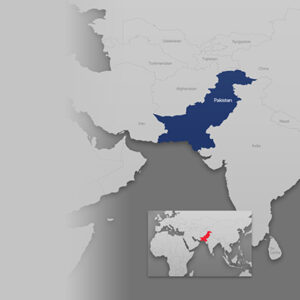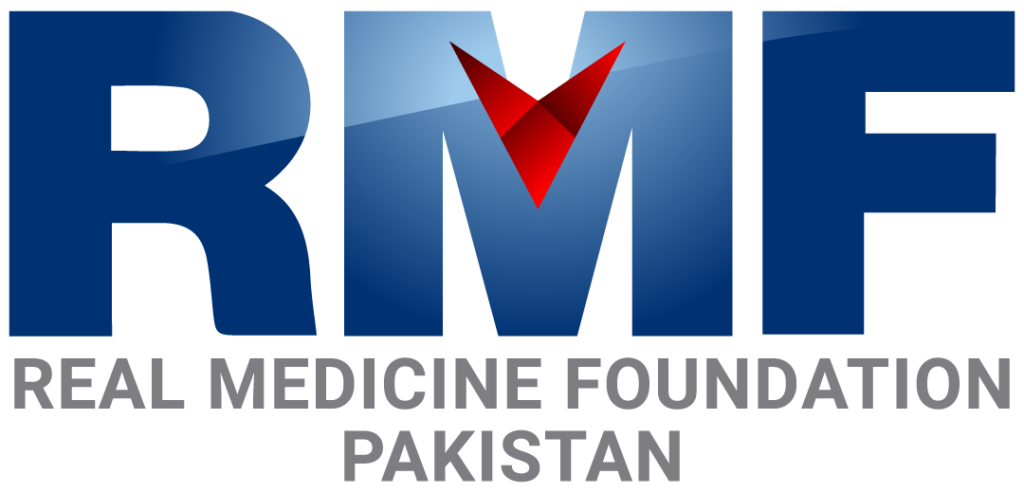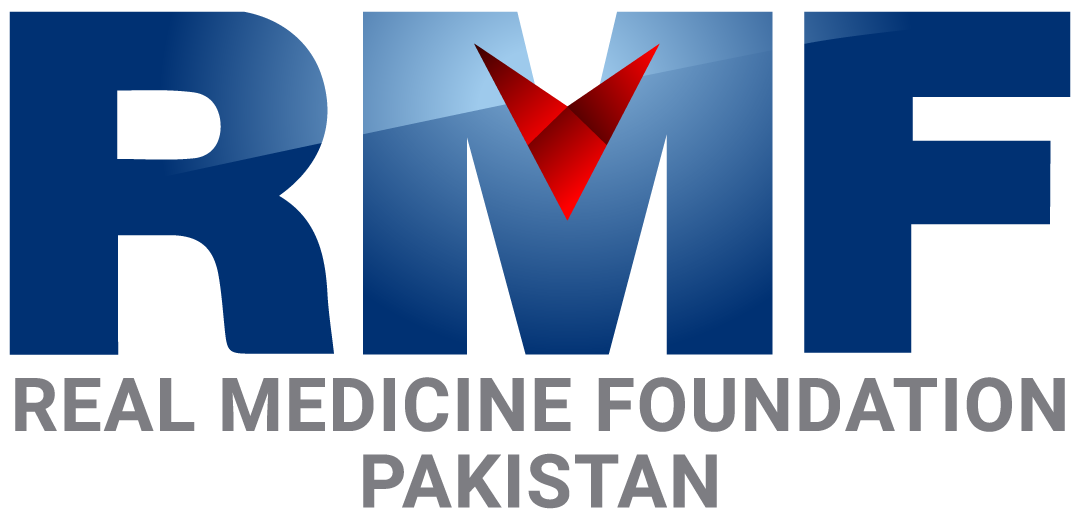- Home
- About Us
- Our Work
- Initiatives
- Disaster Relief
- Hospital and Clinic Projects & Support
- Education & School Support
- Refugee Support
- Healthcare Education & Outreach
- Healthcare Capacity Building & Health Systems Strengthening
- Mobile Clinic Outreach
- Economic Stability & Livelihood
- Community Support
- Psychological Trauma Support
- Health Research
- News & Updates
- Get Involved
RMF Pakistan - Work in Pakistan


Pakistan
RMF PAKISTAN: A SEPARATE, LOCAL ENTITY IMPLEMENTING SUSTAINABLE CLINICS AND HEALTH RESEARCH
In October of 2005, a massive earthquake struck northern Pakistan, causing devastation on an unprecedented scale. Real Medicine Foundation arrived shortly thereafter, participating in immediate relief efforts in the worst hit mountainous regions, with the longer-term mission of setting up a permanent and sustainable clinic to assist the underserved population of this area. RMF Pakistan was then established as a separate, local entity. For eight years, we ran a locally staffed clinic in Talhatta in collaboration with Hashoo Foundation, which has since been handed back to the local government. RMF Pakistan also has had a mobile clinic initiative, additional healthcare projects in Union Council Sardaryab and Union Council Agra District for flood relief (following the 2010 flood) and a Spinal Cord Injury Project in Balakot, among others. More recently, the RMF Health Centre was established in Union Council Taru Jabba, District Nowshera, and we opened our doors in November 2013 to the women and children of the Internally Displaced People (IDP) community hosted in District Nowshera.
RMF has also partnered with the School of Public Health, University of Alberta to identify innovative, contextually specific solutions to the many problems the poor and marginalized, especially women, in Pakistan face. The research project in districts Jhelum and Layyah, funded by Research Advocacy Fund, aims to evaluate if Community Midwives are fulfilling the government objective of improving access to the full scope of skilled maternity care for the poor, disadvantaged and marginalized women. The research findings aim to provide empirical evidence for formulation of maternal health policies and health care system practices in Pakistan.
15INITIATIVES 17TEAM MEMBERS
RMF Pakistan
INITIATIVES
Rehabilitation program for the October 2015 earthquake affected victims of District Swat, Province KPK, Pakistan.
RMF Pakistan is providing winter relief supplies and primary health care to vulnerable IDP families repatriated to their high-altitude homes shortly before winter.
Building on our research in Punjab and Balochistan, RMF Pakistan is now a UNICEF Implementing Partner in the province of Sindh, expanding our knowledge of the diverse social and cultural norms and practices of Pakistan that will inform the Pakistan Girls’ Puberty Book.
Research and identification of innovative, contextually specific solutions to the many problems the poor and marginalized populations in Pakistan, specifically women, face.
Support for the women and children of the Internally Displaced People (IDP) community
Despite the proven public health impacts of schooling, three quarters of all eligible girls are out of school, and 77% of those attending school will drop out before graduation.
Recent research suggests that girls in Pakistan have insufficient knowledge about menstruation, have inadequate access to affordable sanitary materials, and experience high levels of fear and anxiety at menarche.

Healthcare Project, Union Council Agra District
CHARSADDA, PAKISTAN
The devastating flood during the monsoon season of 2010 affected the lives of thousands of families and individuals in each province of the country, but due to Charsadda District’s close proximity to the Kabul and Indus Rivers, the long term damage has been more severe in this area. The destruction of most of the health facilities and the already weak economic condition of the region has made the inhabitants even more vulnerable to health problems.

Healthcare Project, Gulbella, Union Council Sardaryab
DISTRICT CHARSADDA, PAKISTAN
The devastating flood during the monsoon season of 2010 created havoc over a wide area across Pakistan. Although the flood affected the lives of thousands of families and individuals in each province of the country, due to Charsadda District’s close proximity to the Kabul and Indus Rivers, the long-term damage has been more severe in this area.
The most devastating floods in Pakistan’s living memory have affected up to 13.8 million people and killed an estimated 1600. The district in Sindh was particularly devastated where more than 7 million fell victim to the floods. Many are still displaced and have received no assistance since this natural disaster destroyed their homes and livelihood — many are farmers. In Sindh alone, 2.5 million acres of crops were destroyed by the floods. They have already missed one harvesting season and will likely miss many more. Access to healthcare was already poor in many parts of rural Sindh. As a consequence of the floods there is widespread disease and starvation, which are causing children to die of very preventable diseases.
The devastating flood during the monsoon season of 2010 created havoc over a wide area across Pakistan. Although the flood affected the lives of thousands of families and individuals in each province of the country, due to Charsadda District’s close proximity to the Kabul and Indus Rivers, the long-term damage has been more severe in this area.
RMF collaborated with Relief Foundation, a local, private, non-profit NGO that works for poverty reduction, improving quality of life of the ultra-poor and provides free medical relief to the vulnerable in far flung areas of Pakistan, to set up four free one-day medical camps for victims of the 2008 flood.
RMF Pakistan office has collaborated with several grass-root organizations working on different aspects of aid to the IDP. We have collaborated with Relief Foundation to set up free medical camps with volunteer doctors. Funding is required mostly for the cost of medicine. We have connected with the Quaid-e-Azam University which has set up a food and roof fund. A donation of US$ 100 will feed a family of 12 for a month. Similarly a donation of US $100 will provide a safe and decent shelter for 3 families. Three monthly pledges are recommended to ensure sustained and systematic aid.
On October 8, 2005, South Asia was hit by one of the most catastrophic earthquakes in the last 25 years, surpassed only by the devastation of the 2004 Asian tsunami and the 1991 Bangladesh cyclone. The 7.6 magnitude quake killed more than 74,000 and left 3 million people homeless in the treacherous Himalayan terrain. More than 76,000 people were injured, with various forms of crush injuries, including head and spinal cord trauma. The World Health Organization has reported 667 survivors sought medical care for spinal cord injuries.
In October of 2005 a massive earthquake struck Northern Pakistan, killing more than 80,000 people and causing devastation on an unprecedented scale. Many in the remote Himalayan valleys of this region were left without access to shelter, food and healthcare.
The Real Medicine Foundation arrived shortly after participating in the immediate relief efforts in the worst hit mountainous regions, with the longer term mission of setting up a permanent and sustainable clinic to assist the underserved population of this area.
COMPLETED INITIATIVES
Healthcare Project, Gulbella, Union Council Sardaryab
Human Potential in Action
REAL SUCCESS STORIES
RMF Pakistan
LONG-TERM AND FAR-REACHING IMPACT.
Following the 2005 earthquake and 2010 flood, RMF Pakistan continues to offer basic medical services and medical outreach camps where they would otherwise be unavailable.

REAL MEDICINE FOUNDATION PAKISTAN
Initiatives
- Disaster Relief
- Hospital & Clinic Projects Support
- Education & School Support
- Refugee Support
- Malnutrition Eradication
- mHealth Programs
- Healthcare Education & Outreach
- Healthcare Capacity Building & Systems
- Economic Stability & Livelihood
- Flood Victims Healthcare Outreach
- Health Research
- HIV/AIDS Prevention & Treatment
- Medical Support
- Mobile Clinics
- Psychological Support
Designed & Developed by Socialoctors







